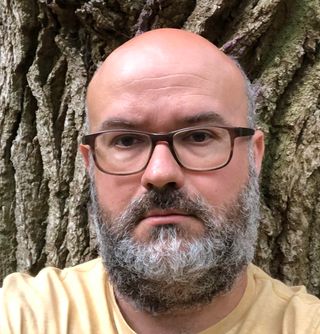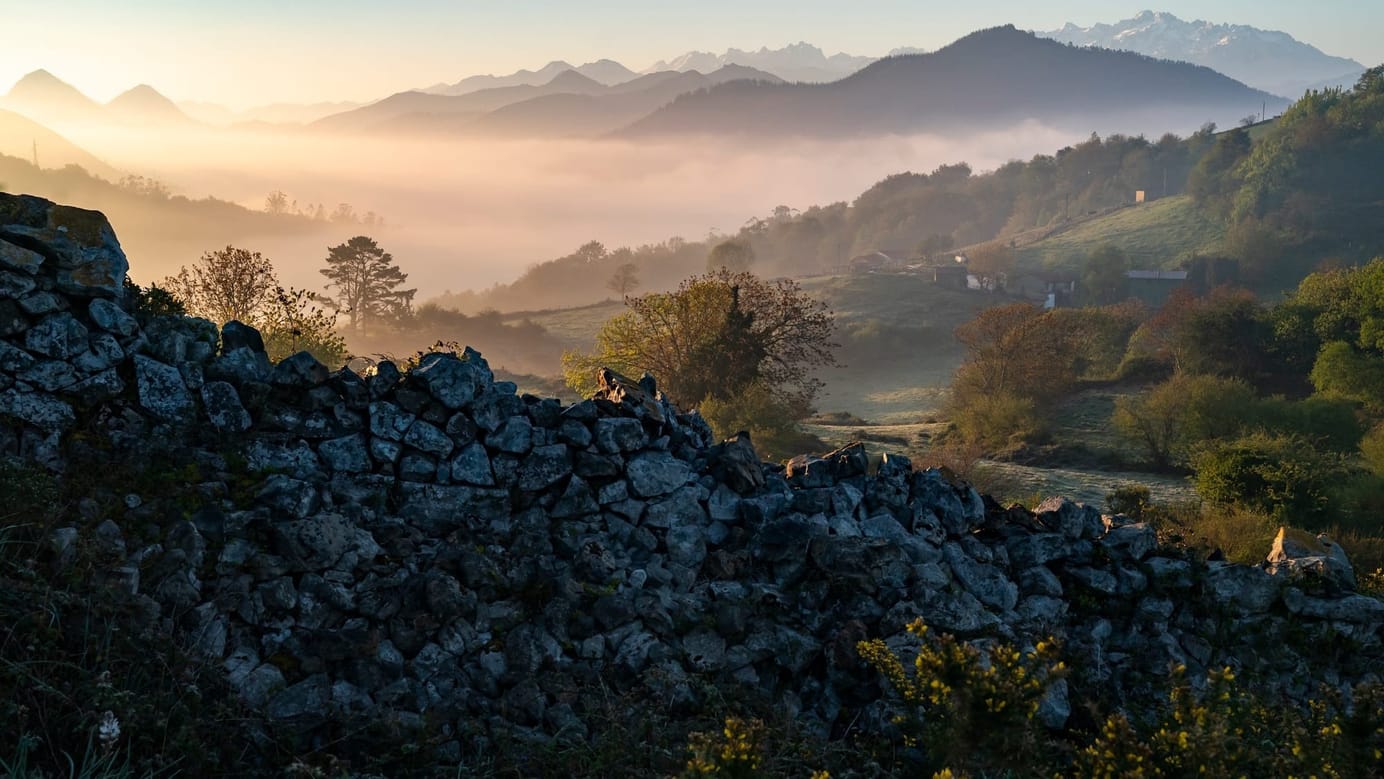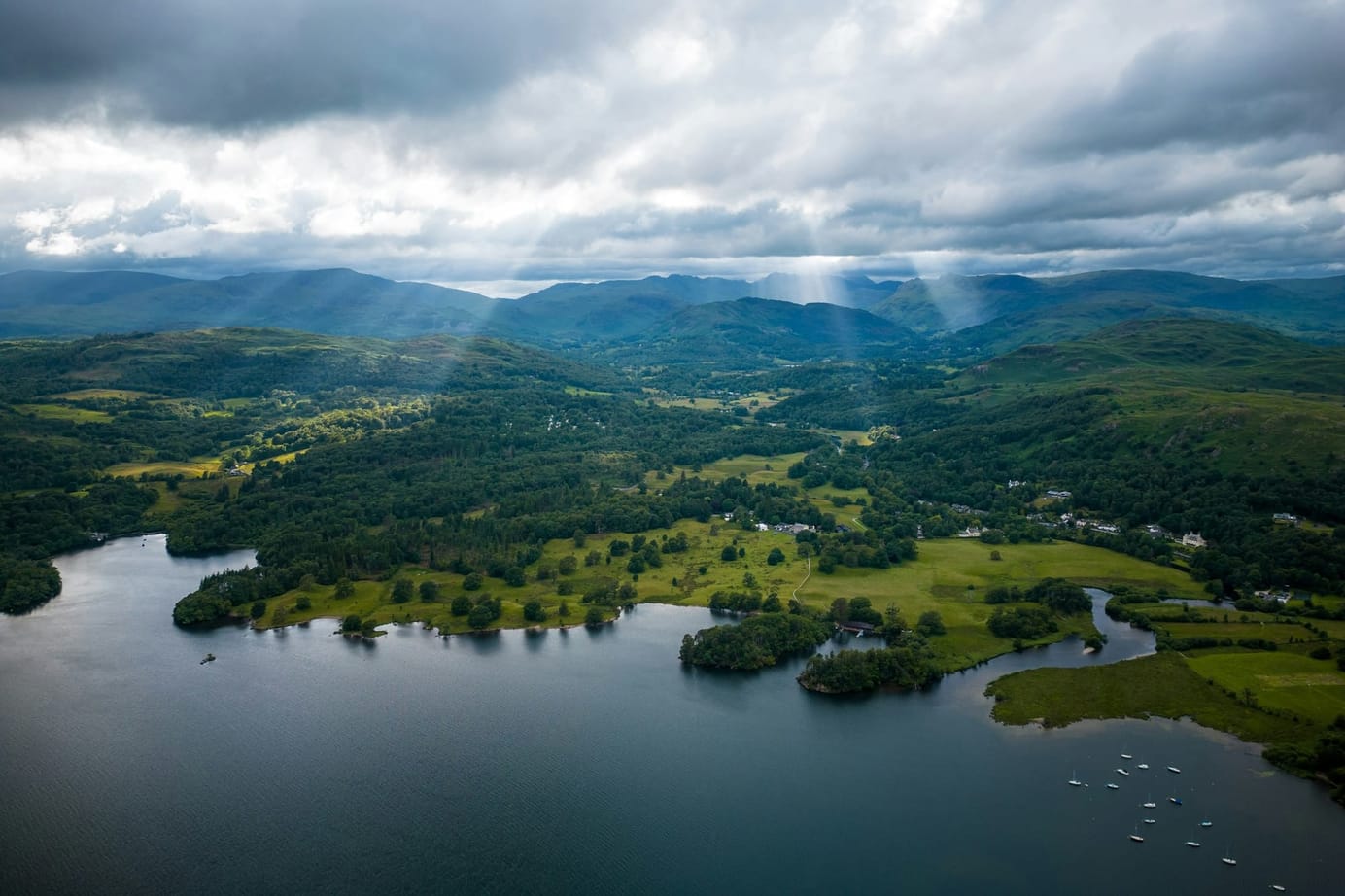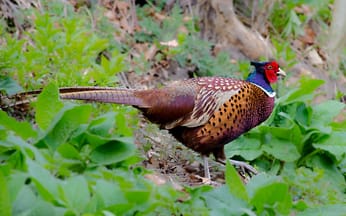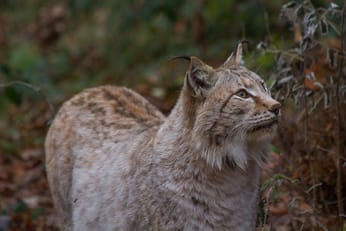
The wood and the road: my battle to save an irreplaceable ecosystem
The Norwich Western Link will destroy the ancient habitats of the Wensum Valley – and make a mockery of the government's policy on biodiversity.
In the woods that I own with my wife and children, I could take you to an oak tree that was a sapling when Queen Elizabeth I was on the throne.
It would have swayed, a supple young tree, when the storms that battered the Spanish Armada came rushing in. Right next to it stands its twin, just as old. There are Grade II listed properties that are younger than these trees and yet better protected.
Now, after more than four centuries, my oaks – and many others like them – are soon to be felled.
They will make way for the Norwich Western Link road, a 3.8-mile dual carriageway costing some £200 million, perhaps more. This road will traverse a globally important chalk river before crashing through a series of ancient woodlands and the roosting sites of barbastelle bats, one of Britain’s rarest mammals.
Campaigning to save this landscape, and the creatures that live there, has become a major feature of my life. This wasn’t what we had in mind when we bought the wood.
The wood…
We came to be woodlanders as a way of breaking the urban/suburban monotony that had become our daily routine.
Our holidays, when we could afford them, had mostly been to my wife’s home city of Buenos Aires, which offered little in the way of pastoral relief. Other than that, we took the occasional long weekend to North Dorset, where I had grown up free to roam the hazel lanes and coppices. I found myself hankering for such a home territory once again – a landscape with which we could acquire a daily intimacy and a sense of stewardship.
Once, on the long drive back to Norfolk after a weekend away, the conversation turned to the idea of moving to the country; of owning a smallholding, with space to grow trees and keep a little livestock, perhaps some hens and goats. We knew this was financially out of reach, but it was fun to fantasize. Somewhere on the journey, I recall passing a sign: Woods For Sale.
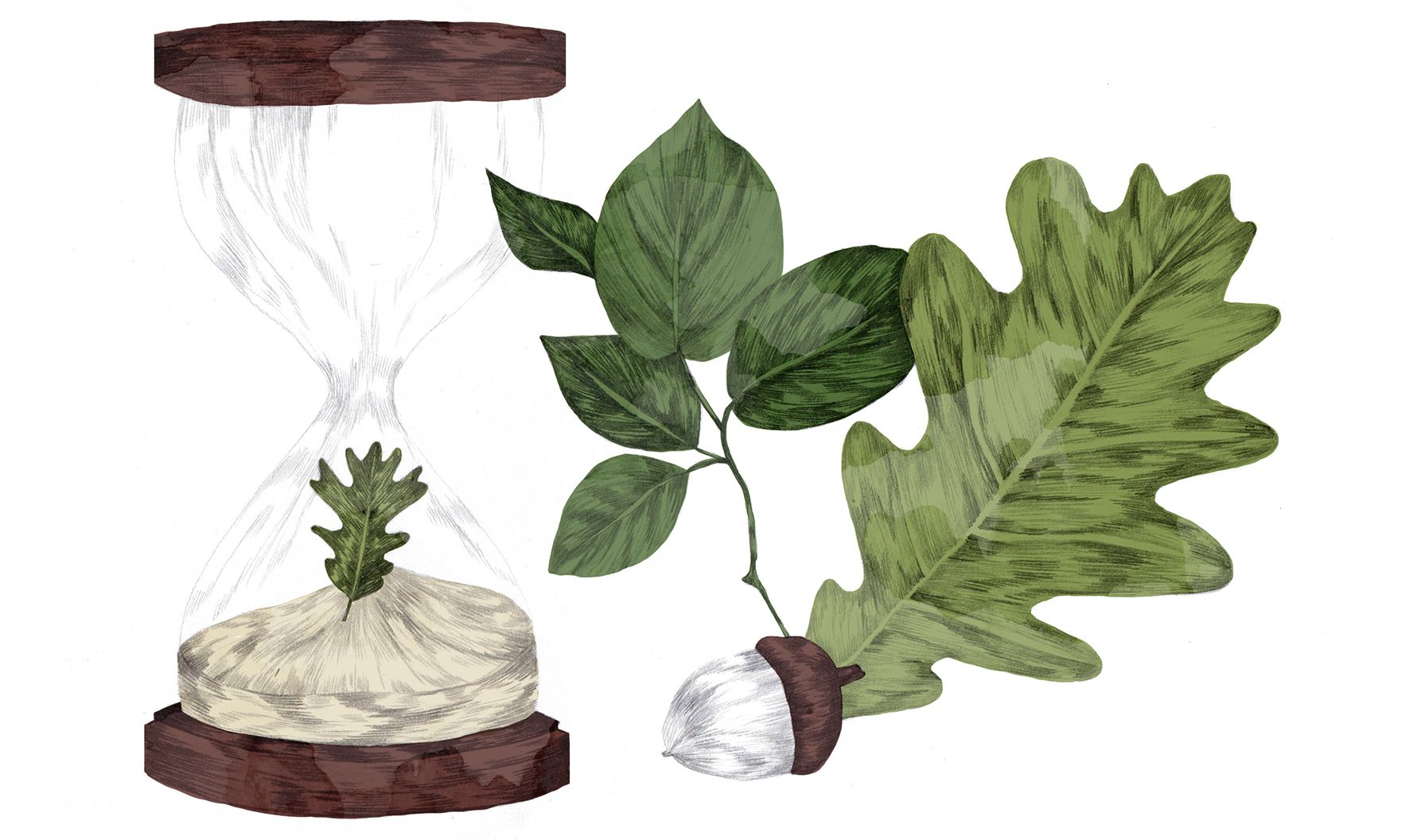
Two weeks later, and we found ourselves in the Wensum Valley, following not a map but an estate agent’s instructions. Here was an old landscape of woods, hedges, grassland, arable fields and wet pastures, at odds with the monocultures that you often find in the East Anglian countryside.
The track took us up a gentle incline under beech and lime. The deeper we went, the more everything beyond seemed to fall away.
Seen from the outside, woods can appear dark and impenetrable places, but once you cross the threshold, the perspective alters. You are forced to move with the trees, negotiating the understory with care. You begin to see in the woodland light, from the woodland’s perspective. The outside world becomes peripheral.
I was struck by how illiterate I was in the language of the wood. I was slow to name the trees and other woodland plants. Though I had spent much of my childhood playing outside, somehow the language of the natural world had been buried by three decades of study, work and suburban comfort. I felt it stirring.
The girls found the ancient boundary oak and played beneath its boughs, turning the acorn cups into bowls for the fairy folk. As we turned to leave, I noticed some broad serrated leaves. Hazel. I stood in the green shade and felt a homely familiarity. That was the moment the matter was settled for me.
When we told people we were purchasing a wood, their reactions generally fell into two camps. There were those who got it. They were genuinely interested in the idea, asked lots of questions, or wanted to visit. They’d offer to help us with it.
The second camp was bewildered by such a notion. One friend laughed in my face: What would you want to do that for? This camp wanted to know if it could be built upon. Some seemed genuinely affronted by the idea, as if putting money into anything other than bricks and mortar was in some way radically subversive. Well, perhaps it is.
When I think of small woodland owners, I’m reminded of Plotlanders. These were the unorthodox self-builders who, between the 1800s and World War II, snapped up plots of land, made newly affordable as imports of cheap grain pushed many farmers into bankruptcy.
British anarchist writer Colin Ward described these plots as places where ordinary people could build their dreams, organically expand their homes when they could afford to, and set up smallholdings on the land. It was an escape, in many cases, from the substandard rented housing in London, and allowed a degree of healthy self-sufficiency. Plotlanders were a kind of guerrilla homebuilder engaged in a social experiment.
I see non-commercial woodland ownership as something similar. Woods are an aspect of our landscape that have long been overlooked and undervalued – fenced off in large estates, enclosed and out of sight.
We small woodland owners are also engaged in a type of Arcadian experimentation. While we’re not allowed to build in the woodland, we are free to camp or use it for all manner of woodland activities, such as green woodworking, coppicing and bushcraft, or to manage it for wildlife or for a small profit. Or simply to enjoy it for what it is.
… and the road
The proposed route of the Norwich Western Link road spans the Wensum Valley, tying together the two A-roads that run westwards of Norwich. Sitting in its way is my woodland. My Tudor oaks.
The road was first proposed as part of a wider road building scheme in 2005, but the plans were dropped after English Nature (since rebranded as Natural England) and the Environment Agency expressed concerns over the ecological sensitivity of the area. However, Norfolk County Council re-animated the idea in 2019, and the business case was submitted to the Department for Transport earlier this summer.
So what changed? In terms of the ecological value of the Wensum Valley, nothing at all. If anything, we now possess an even greater understanding of just how sensitive and valuable these habitats are.
The River Wensum is a chalk stream – a globally unique habitat found mostly in southern England. According to the Norfolk Rivers Trust, the road would harm one of the county’s few remaining populations of white-clawed crayfish. Otters, water voles, lamprey and eels would also be disturbed by the increases in traffic, light pollution and contaminated water runoff.
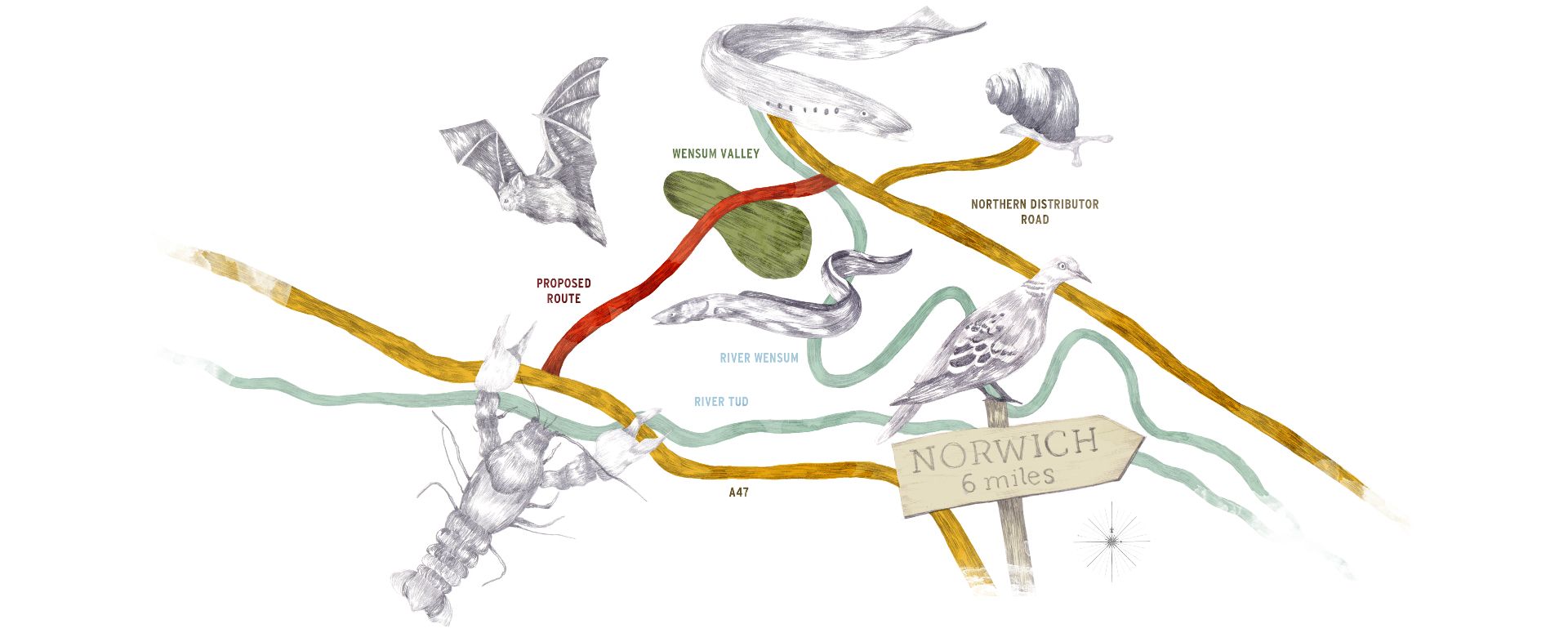
Ancient oaks are particularly important for wildlife, and in the case of our woodlands, for bats. Rare barbastelles roost under the loose bark and in fissures, and our woodland forms part of a wider complex that hosts the only known 'super-colony' in the UK. There are at least 270 bats living in these old trees, including the warm roosts where the pregnant females gather to give birth and nurture their babies come the summer. Ecologists say that the proposed solutions – underpasses, green bridges and saplings – will do little to mitigate the loss of their original home. If the road is built, their future looks bleak.
Hollows and splits, the kind you only find in the most wizened of trees, also provide nesting sites for birds. Their gnarled trunks are a potential habitat for hundreds of different species of insects, lichen and fungi. The loss of these trees will have a major impact on the wider ecology of the area, reverberating beyond the woodland itself into the rivers and pastures of the valley.
In terms of biodiversity, then, these ancient trees are priceless – but there are other equally pressing reasons why they should be preserved and protected. In these old trunks are centuries of stored carbon. Once felled, this carbon is released into the atmosphere, fuelling the steady rise in global temperatures.
The roadbuilders will, of course, claim they can achieve 'biodiversity net gain' and offset carbon losses through replanting. But young saplings will not sequester carbon at the same rate as the old established woodlands. Scientists have found that mature trees continue to absorb carbon into old age, in some cases fixing the carbon equivalent of a mid-sized tree every year.
It will take these saplings some 350 years before they begin to reach the size and majesty of the ancient oaks they replace; and, in any case, the builders cannot recreate a super-colony of barbastelle bats. The notion of 'biodiversity net gain' makes no sense when it comes to rare species or complex ecosystems – an inconvenient truth that tends to get buried in the footnotes.
The fact is that, by building roads through woodlands, we are trashing something that we have no right to trash. The ancient oaks that saw out Elizabethan times have also seen out at least sixteen generations of woodlanders. They have been cared for by more than 400 years’ worth of woodsmen, and should be passed onto future generations; enjoyed by our great-great-grandchildren, not felled to make way for a road scheme that will barely make it to the end of this century.
Though it may look gnarled with age, our oak tree is barely halfway through its life. With luck, it could survive another 400 years, experience another sixteen generations of children playing beneath its boughs – by which time it is likely the roads built today will have crumbled entirely, made defunct through changing technologies and priorities. The current spate of road-building is borne of myopia and unsustainable economic thinking; the resulting roads and viaducts are short-termism made material, with devastating long-term consequences for the environment.
It boils down to a question of values. It is time we put decision-makers straight: let them know that trees should be honoured above roads, habitats and animals esteemed over infrastructure. We can’t keep trashing that which should be treasured and preserved for future generations.
It is time to take a stand and speak up for the trees, the woods, and all the living creatures that depend on them – including ourselves.
Campaigners are raising money to fight the Norwich Western Link road. Their crowdfunders can be accessed here and here.
Illustrations by Cláudia Salgueiro.
Subscribe to Inkcap Journal to receive our weekly digests and support our independent environmental journalism. You can also support our work by making a one-off donation.
Subscribe to our newsletter
Members receive our premium weekly digest of nature news from across Britain.
Comments
Sign in or become a Inkcap Journal member to join the conversation.
Just enter your email below to get a log in link.

